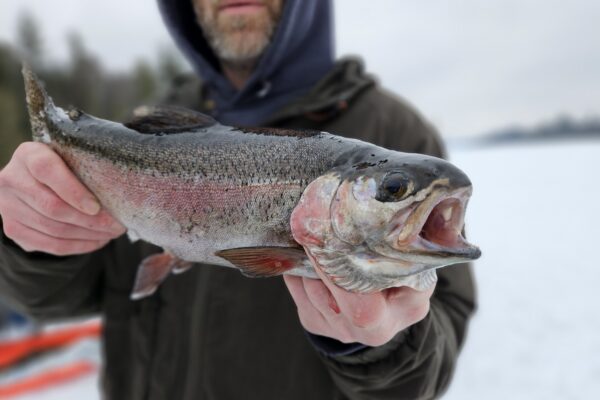Forest Service partners with researchers to transform wildfire fuel into biochar in Superior National Forest
Efforts to reduce wildfire fuel while simultaneously sequestering carbon are underway in the Superior National Forest.
Researchers at the Natural Resources Research Institute (NRRI) recently conducted a demonstration project to convert balsam fir into a soil-enhancing, carbon-sequestering material called biochar.
Biochar is produced by heating biomass material in a low or no-oxygen environment. “You’re not combusting material. You’re paralyzing it,” said Brian Barry, the chemist and project lead for the NRRI demonstration project.
Barry said biochar is essentially a “fit for purpose charcoal.”
In other parts of the state, Barry said biochar is created using agricultural waste such as sugarcane or switchgrass. However, woody biomass material is more abundant in the northern boreal region and is a suitable alternative.
Balsam fir is considered ‘ladder fuel’ by the U.S. Forest Service due to its dense understory and vulnerability to spruce budworm.
The demonstration project involved U.S. Forest Service crews cutting balsam fir up to 5 inches in diameter near homes and cabins in the Superior National Forest.
“We really have to focus our efforts on where we do it. We can get a lot more bang for our buck if we do it right next to someone’s home rather than out at the edge of the Boundary Waters,” said Patrick Johnson, the east zone fire management officer with the U.S. Forest Service.
After Forest Service crews and researchers harvested the balsam fir, it was converted into biochar and distributed to central Minnesota for soil amendment in a coal ash landfill at the Boswell Energy Center in Cohasset, Minn. Barry said the soil-enhancing biochar material helped improve revegetation of the landfill cap.
The complex demonstration project showed that there is an avenue to harvest wildfire fuel in the Superior National Forest surrounding homes while creating a sustainable industry in Minnesota for repurposing biomass material.
Johnson said there is significant value in the research and demonstration project. “In the Superior National Forest, there are about 300,000 acres of forest that’s been pretty well infested by the spruce budworm.”
The Spruce budworm is a native budworm that tends to feed on balsam fir or white spruce in Minnesota. “It’s currently in the expanding phase,” Johnson said. “It’s a natural bug that comes through every 30 to 50 years. And we’re at about the 35-year cycle on it.”
While the demonstration project in the Superior National Forest was conducted on a small scale, Barry said there is tremendous potential for a healthy market for biochar.
“So now, big money, big companies are looking at doing this on a much larger scale than they were 10 to 15 years ago,” said Barry. “Currently, biochar is the number one mechanism for offsetting credit, or offsetting carbon in the United States.”
Carbon offset credits are a tradable “right” or certificate linked to activities that lower the amount of carbon dioxide (CO2) in the atmosphere, according to the Massachusetts Institute of Technology (MIT).
Rather than burn or leave the cut balsam fir in the forest, the woody biomass material could be chipped using a mobile chipper and processed into biochar. Essentially, taking a material that would contribute carbon dioxide into the atmosphere and capturing the carbon in the converted biocarbon material.
When it comes to removing carbon from the atmosphere, Barry said, “It’s going to be all hands on board.” He added, “Biochar will just be one part of the puzzle.”
WTIP’s Kalli Hawkins spoke with Barry and Johnson about the biochar demonstration project in the Superior National Forest in the latest Outdoor News Podcast episode. To learn more about the research and demonstration project, tune in below.
Learn more about the demonstration project here.














